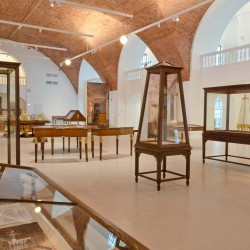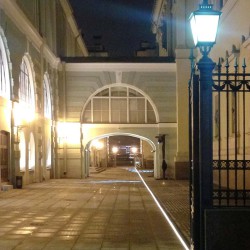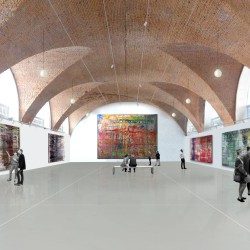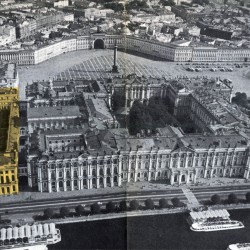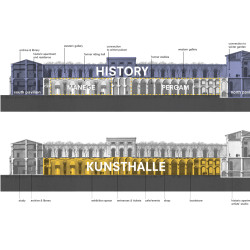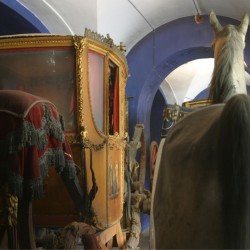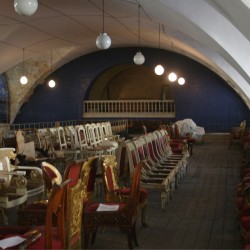OMA . photos: © Tochka Opory . + lichtvision
While exploring and studying the Hermitage in the early 2000s, we encountered, hidden beneath the dense mass of the museum, the former stables and manège of the palace complex. Though located on the ground level of the Small Hermitage, these spaces have remained unseen by the public, and have primarily been used to store furniture, carriages and other large items since the 1950s.
_
Free of decoration, the two large and open halls of the Small Hermitage are transformed into a Kunsthalle, a new space for temporary exhibitions, events and experimentation– a radically different condition to the rest of the museum.
Part of the project is to reinstate an original condition of accessibility of the halls at street level providing the Kunsthalle with its own independent entrance along the Shuvalov Passage, which also performs as an alternative entrance to the entire museum, rebalancing the flow of visitors. By opening the Shuvalov Passage to the public, the city enters the museum and restores an earlier urban model, in which each of the Hermitage elements has a relatively independent life as a component of the city. The interior space of the Kunsthalle, open and visible from the Shuvalov Passage, activates the street level – also a new condition for the Hermitage. The Passage itself is a new museum environment for outdoor events, set against the solid façade of the New Hermitage building filled with statues of ancient and renaissance artists, unseen for many decades.
Inside the Kunsthalle, the Pergam Hall (the former stables), renamed after the Pergamon Altar, which was stored and exhibited here in the 1940s, houses the new visitor entrance space. It is coupled with the Museum’s art packaging facility, offering visitors a unique glimpse of the usually hidden mechanics of a museum.
Manège Hall is key new open space, within the museum complex, for modern display and experimentation. Drastically distinct in it relations to the outdoor space, spatial qualities and curatorial regime, the Kunsthalle is also a new gallery/venue in itself within the Hermitage museum.
_





